
Research Article
Austin J Bus Adm Manage. 2017; 1(2): 1010.
Real Estate Investment and Management Strategies of Institutional Investors in Switzerland Empirical Analyses of 2014 to 2017
Trubestein M*
Department of Real Estate, Lucerne University, Switzerland
*Corresponding author: Michael Trübestein, Institute of Financial Services Zug IFZ Department of Real Estate, Lucerne University, Switzerland
Received: June 26, 2017; Accepted: July 13, 2017; Published: July 20, 2017
Editorial
The paper analyzes and compares – based on empirical surveys among institutional investors in Switzerland in 2017, 2016 and 2015/14 –current and future investment strategies in direct real estate and indirect real estate vehicles. In cooperation with the ASIP (Association of Pension Funds), questionnaires were sent to pension funds/staff pension funds as well as life insurance companies and foundations in Switzerland as well as in Germany and Austria. In total, more than 130 questionnaires were evaluated each year, meaning around US$ 1,000 bn of invested capital and around US$ 100 bn of invested capital in real estate. Due to only very few comparable studies in this specific area, the study is based on an explorative approach, showing empirical validated insights.
Swiss investors are strongly home-biased: now and in the future, clearly contradicting the portfolio theory and their own intention for diversified portfolios. The selection of an external manager is mainly based on reputation, not reflecting contractual solutions based on the “Principal-Agent-Theory”. Due to limited opportunities, investors expect a return of 4-5 % for nearly all real estate investments in Switzerland and of 5-6 % investing abroad, not fully reflecting higher risks with certain investments. Professional IT-software or digital trends are of nearly no importance. When investing indirectly, Swiss Investment Foundations are the preferred and “ideal” vehicle.
Furthermore, the analyzed investors were clustered (k-means) in three different groups based on their organizational structure, also showing different return structures and standard deviations.
Keywords: Real estate; Asset management; Investment management; Institutional investors; Pension funds; Switzerland; Direct investments; Indirect investments; Empirical study
Introduction
In Switzerland, the retirement systems are based on a classical 3-pillar-system: the public retirement insurance system, company plans and individual retirement investments. Public schemes are structured in a system where the current pensions of the retired are paid from the current premiums of the ‘not yet retired’, in contrast to the privately operated schemes which work on a capital accumulation system. Hereby, company plans (2nd pillar) are mandatory for every employee and are organized based on a funding principle: These pension funds are of high importance for securing the retirement. Furthermore, every company can organize the pension plan in an individual manner. As a consequence, Swiss pension funds, consisting of 75 public and 1,707 private institutions, comprising greater than 4m active members in total, are important market participants in the investment sector. In total, these pension funds invest assets of US$/ CHF 780 bn and real estate assets of US$/CHF 180 bn (23%). During the last 10 years, the number of pensions funds decreased by 40% so a strong concentration can be observed with possibly new investment strategies in the remaining institutions [1].
In recent years, an increasing interest in real estate has been observed among institutional investors worldwide as direct and indirect real estate investments have come to be valued as a targeting part of the investment portfolio. In addition, the positive increase in allocation to real estate assets has been enhanced by low federal fund rates which have led to low returns on benchmark investments. The tendency to allocate capital to real estate has also been observed for investors based in German speaking countries.
This gives rise to questions concerning whether the actual investment strategy of institutional investors in direct and indirect real estate will be maintained, and where future investment foci will be located. Furthermore, the role of foreign real estate investments has to be clarified, as international markets offer possibilities for diversification of real estate investment portfolios and may offer a high, or comparatively higher, return. Selected real estate management tasks are, and may continue to be, executed in accordance with the New Institutional Economics, externalized in order to optimize the organizational structure and to benefit from higher returns. For a diversified portfolio and lean management structures in particular, indirect real estate specific vehicles may and can be of importance for pension funds, especially for smaller pension funds.
The empirical research study which follows herein initiates this process in an attempt to establish empirically validated answers to these questions and to identify the future real estate strategy and management for investors in Switzerland. Although the study was conducted in all German speaking countries, the foci are set on institutional investors in Switzerland as they represent the majority of participants.
Methodology
In recent years, several studies were conducted in the general area of investments and institutional investors in Switzerland. Many of them focused on the general asset allocation and portfolio management of institutional investors and only a very small minority focused on real estate investments or on real estate asset management [2]. A first broad scientific study and analysis in the area of Real Estate Investments and Asset Management for institutional investors by a University was firstly conducted by Truebestein in 2014 and repeated every year with the same sample and the same questions in addition to some individual foci each year [3].
Because of the absence of scientific research on this topic, the first target was the systematic collection, completion and analysis of data on the current preferences of (real estate) asset management for direct and indirect investments. Thus, the empirical study has, primarily, a hypothesis-exploring characteristic and has been used to determine the relationship of structures and the evolution of hypotheses concerning the current status and concepts in practice in Switzerland. So, where targeting, conclusions of the study of 2016 and 2015 among institutional investors in Switzerland are included in the analysis [4].
In order to derive structured solutions for the real estate investment and management behavior of institutional investors, the empirical survey was conducted in cooperation with the ASIP (Association of Pension Funds). The survey was carried out by means of a written questionnaire consisting of 27questions in 4 parts: general data/general investments in real estate (4 questions), direct real estate investments (11 questions), indirect real estate investments (10 questions) and investments in infrastructure (2 questions) mainly based on “multiple-choice” options [5]. In some questions, the companies had the possibility to add additional information to allow individual company needs and views to be expressed, in an “exploratory nature”. To obtain a wide view of the investment behavior of institutional investors, the questionnaires were sent to numerous institutional investors:
- All pension funds in Switzerland registered in the ASIP (Association of Pension Funds) databank
- All life insurance companies in Switzerland
- All foundations in Switzerland (the Association of Swiss grant-making foundations)
The study was conducted in 2017and analyzes by means of the SPSS Statistical Package for the Social Sciences. In total, the following institutions could be analyzed:
• In the study of 2017, 134 questionnaires were evaluated, representing US$ 915bn of invested assets and US$ 89bn of invested capital in real estate.
• In the study of 2016, 135 questionnaires were evaluated, representing US$ 1,063bn of invested assets and US$ 810 bn of invested capital in real estate.
• In the study of 2015, 152 questionnaires were evaluated, representing US$ 950 bn of invested assets and US$ 80 bn of invested capital in real estate.
Over 2/3 of the institutions in the sample are pension funds or related institutions, clearly dominating the sample and representing over 30% of the investment volume of all pension funds in Switzerland [6].
Limitations of the Study
The objectives of this study and paper are, in accordance with the information and the outline in the methodological approach, to derive an initial contribution to the management of direct and indirect real estate investments of institutional investors in Switzerland and the future structure of the management as well as to compare the results with former studies. In order to address this extensive subject adequately and scientifically, some limitations of the research object are inevitable.
While real estate asset management services from different providers are designed for many recipients, in this study only the views of institutional investors as recipients are selected and analyzed extensively. Although the questionnaires were sent to numerous investors in a cooperation of the ASIP and several investors answered, the possibility of a bias in the survey cannot be excluded, since companies that have a “clear” idea of real estate asset management and/ or the associated services, might tend to be more likely to answer the questionnaires than other companies that have not yet encountered or had sufficient experience of this issue to date. Consequently, there may be a positive over-subscription of responses from the former group. However, the author does not claim to have achieved congruence between the theoretically defined population and the actual companies represented by the sample [7]. This objective is not prosecuted in the present analysis [8].
However, it can be stated that the study has a “tendency” to be representative based on the coverage and real estate volumes. In summary, the companies surveyed, due to their investment volume, their origins and their number, allow an initial assessment of real estate investments in that group. Nevertheless, a high degree of interest in the questionnaire was observed and indicates that further analysis should be undertaken.
Cluster Analyses
Based on a cluster analysis (k-means, missing pairwise) Swiss investors were grouped in three clusters, based on their organization structure for a real estate asset management in their institutions. The cluster analysis leads to different concentrations (Figure 1):

Figure 1: Cluster analysis based on the organization structure of investors (1 = internal organization; 2 = other internal unit; 3 = in cooperation; 4 = external
organization).
- A cluster of investors focusing on the internalization of tasks in the area of strategy, transactions, management, reporting and controlling (“strategy and management organized internally”), n = 30.
- A cluster of investors focusing on the internalization of tasks in the area of strategy, transactions, reporting and controlling (“strategy organized internally”), n = 21.
- A cluster focusing on the externalization of tasks in the area of strategy, transactions, management, reporting and controlling (“strategy and management organized externally”), n = 15.
The different clusters show different targets when investing in real estate and evaluate the criteria differently. All variables are significant or highly significant. So it is important to understand, if different clusters perform in a different way (Figure 2).
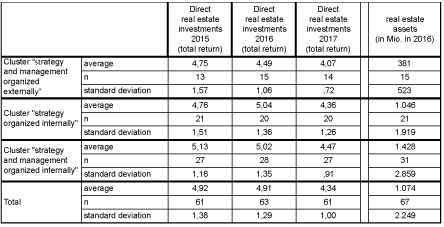
Figure 2: Returns and size of the clusters.
The current market environment is characterized by low interest rates and thus also low yields on the real estate markets. This is also reflected in the survey: the institutions surveyed are confronted with declining returns (total return) and expect declining returns in the future. Returns and standard deviations decrease implying, that high returns in the markets are getting more and more difficult to achieve and opportunities are difficult to find.
In general, the deviations in the yield within the clusters can be classified as low, the capital investments in real estate differ and are marked by very high standard deviations. The cluster “strategy and management organized internally” achieves the highest returns during the analysed period – the institutions grouped in this cluster can easily achieve performance improvements based on the internally organized management. The cluster “strategy and management organized externally” has the lowest returns and the lowest fluctuations in the returns achieved. At the same time, the institutions associated there have low standard deviations. The cluster “strategy and management organized internally”, in comparison to the other clusters, is characterized by “high” standard deviations.
Concluding, the size of the portfolio and the organizational structure are no clear benchmark for the performance of the institutions. Based on comparable surveys in the Swiss real estate markets, the yields are evaluated as “very high” – for many investors, these yields may be lower.
Empirical analysis for direct real estate investments
In the first part of the study, institutions are analyzed based on investment and organization criteria for direct investments as well as the use of software products.
Criteria for the selection of a real estate asset management
In the study of 2017 and also in the studies of 2016 and 2015, the criteria “track-record” and “image/ reputation” as well as cost of the real estate asset management are decisive criteria when choosing an external real estate asset management. In contradiction with the Principal Agent Theory, contractual elements such as “contract duration”, “implementation of the contract in staff contracts” or “equity investments of the asset managers” are of lower importance for the selection of an asset manager (Figure 3).
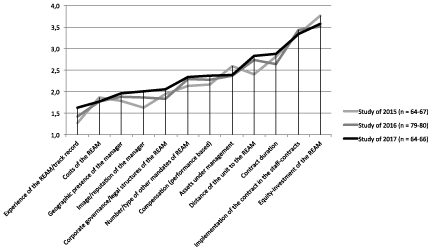
Figure 3: Criteria for the selection of a real estate asset management in Switzerland with 1 = very important to 4 = not important.
Concluding, a high degree of confidence can be seen in the market and with the partners. Consequently, for external asset managers, it can be stated that high market entrance barriers exist for new asset managers, as the clusters trust experienced and renowned managers. Thus, it might be difficult to present and implement new and innovative concepts.
Investment criteria for direct real estate investments
The derived targets for direct investments are valued similarly in the studies of 2017 and 2015 (Figure 4): The investment duration (“long-term orientation”) and monetary related targets, like “target return”, “maintenance of capital” or “constant cash flow”, are classified as the most important targets. An increase in value is evaluated worse than in the study of 2015, implying that there may be a stagnation in the real estate markets.
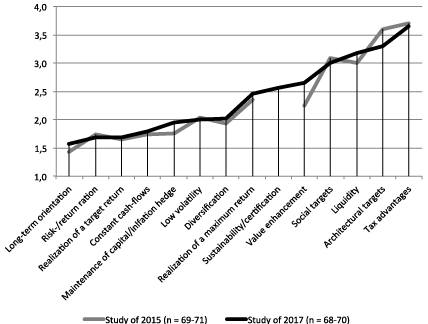
Figure 4: Investment criteria for direct real estate investments with 1 = very important to 4 = not important.
Organization of real estate asset management tasks
As part of the subsequent analysis, the companies under investigation are analyzed based on their actual organizational structure (15 variables) in the area of strategy, transaction management, management and control (Figure 5). In accordance with the current organization of real estate asset management, the evaluation of a possible externalization of these tasks reflects the behavior of the institutions. Swiss investors have a higher tendency to externalize the analyzed tasks compared with the study of 2015. As they mainly invest in Switzerland and know the market participants well, they have a high degree of confidence in the service providers. Furthermore, the may seek for professional service providers allowing them to increase the value of their assets.

Figure 5: Development of the organization of the real estate asset management with 1 = internal organization, 2 = in cooperation with external service-providers
to 3 = external organization.
Current real estate portfolio and future investments
Swiss investors prefer the residential real estate sector when investing in real estate as illustrated in (Figure 6). Investments are also increasingly undertaken in this area in the future. Property types with possibly higher yields – thus office properties, retail properties or special properties – are of secondary importance for investments. In the future, these investments are less attractive than in the study of 2015. This may be a result of growth rates in the residential real estate sector in Switzerland in the last years and the current challenges and vacancies in office properties in Switzerland. In addition, retail properties are strongly affected by internet-shopping and a tendency to buy goods abroad.
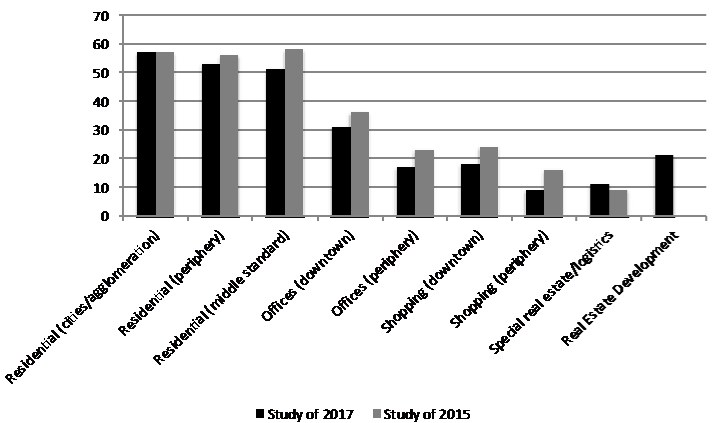
Figure 6: Current investments (number of institutions invested).
Use of real estate asset management software
For the institutions in the sample, the use of specific real estate asset management software does not seem to be of high importance – as illustrated with the use of 14 tasks of real estate software (Figure 7). All of the investigated functions of real estate software, including strategic and operational areas, are only used by max. 60% of the participants.
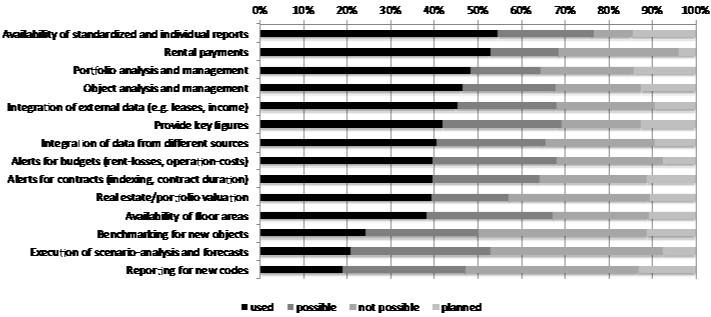
Figure 7: Use of real estate asset management software in the sample (n = 51-56).
In conclusion, it is deducted that the institutions are not aware of the potential of asset management software and that they think that there is (explicitly) no need for such as system. It has to be questioned, if there are no targeting IT-solutions in the market to fulfill the needs of institutional investors with real estate portfolios. Nevertheless, a huge market for software products may be anticipated in the future.
Market environment in Switzerland
The surveyed institutions were asked to assess the current situation of the real estate markets (Figure 8). Based on the results, the investors surveyed assess the product offer on the Swiss real estate market as “neutral”. In addition, a lack of real estate products does not result in an intensified transformation into indirect real estate investments. In the future, an increase in yields will be obtained by the optimization of cash flows, which means, that operational real estate asset management is becoming increasingly important. A clear and strong criterion for investment in real estate is the area of “sustainability”, which takes account of the growing importance of a sustainable value system. On the other hand, a national or international certification of sustainability is not an investment criterion.
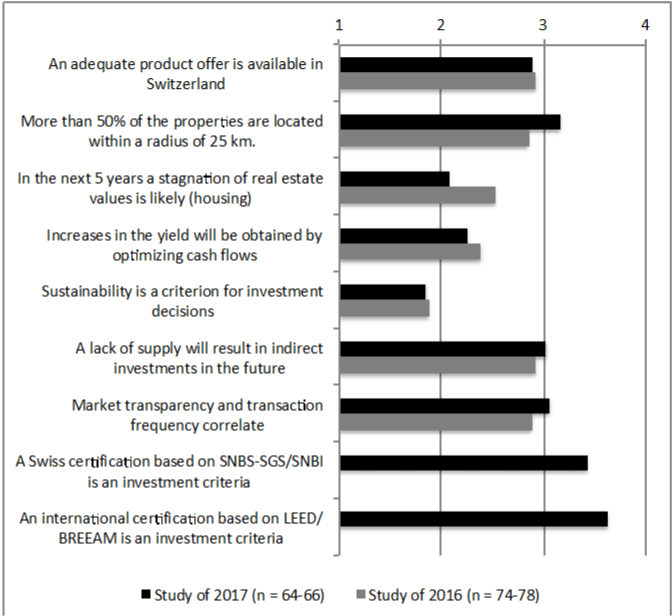
Figure 8: Assessment of the situation of the Swiss real estate market with 1 = agree to 4 = don’t agree.
Empirical analysis for indirect real estate investments
Based on selected investment criteria and preferences for indirect investments, Swiss institutional investors are analyzed in the following chapter. While indirect real estate investments in Switzerland have been used for capital allocation for many years, indirect real estate investments abroad are currently of a subordinate position in the investment portfolios of institutional investors based in Switzerland leading to clear suboptimal portfolio structures. In addition, there is a high interest in direct investment in Switzerland, as shown, also in the future. Consequently, it is of great interest to determine requirements for indirect real estate investments and to examine criteria for the selection of a target product, especially for indirect investments abroad.
Returns of indirect investments
The returns (total returns) for indirect real estate investments in Switzerland are – in addition to the selected risk profiles and the foci of the investments – decisively influenced by the selected (listed or not listed) investment vehicles.
For the analyzed investors, it can be seen, that – on average and across all (listed and non-listed) vehicles – the returns of real estate investments in Switzerland stagnated over the last two years (Figure 9). In this context, a decline in yields is expected for 2017. The yield decreased from 7.7% in 2014 to 5.9% in 2015 and to 5.8% in 2016and is expected to be at 4.2% in 2017. It can also be seen that the standard deviation decreased from 3.3% in 2014 to 1.91% in 2015 and to 2.4% in 2016 and is “only” at 1.16% in 2016. This means that there is an alignment in the markets and it is more difficult to achieve a “high” return or to take advantage of opportunities.

Figure 9: Development of the return (total return) for indirect real estate investments.
Within foreign real estate markets, a similar situation can be observed: The yield decreased from 12.2% in 2014 to 4.2% in 2015 and to 4.75% in 2016 and is expected to be 4.42% in 2017. Furthermore, it can be seen that the standard deviation decreased from 8.2% in 2014 to 4.3% in 2015 and to 2.95% in 2016 and is estimated to be at 1.4% in 2016. This implies that there is an alignment in the real estate markets and it is more difficult to achieve a “high” return or to take advantage of opportunities. It seems, that the returns for indirect investments stagnate in a bracket of 4-5 % and the markets strongly develop similarly and equalize.
Investment criteria for indirect real estate investments
For all investors, diversification is the most important reason for indirect investments in their home countries as well as abroad (Figure 10). Interestingly, this target is not reflected in the current portfolios of institutional investors. Classical criteria for an alignment of interests (“Principal-Agent-Theory”) like contractual restrictions or a performance-based remuneration are not of primary importance.

Figure 10: Criteria for indirect investments (in Switzerland and abroad) with 1 = very important to 4 = not important.
Structure and investments in indirect real estate vehicles
When investing in indirect real estate assets in Switzerland, vehicles that are especially constructed for institutional investors, such as Swiss Investment Foundations in Switzerland, are the most important vehicles: Swiss Investment Foundations clearly dominate the sample, followed by listed vehicles. For investments abroad, a wider selection of investment vehicles is undertaken, also foreign investment products (like special funds or SICAVs) are used, partly as co-investment. Also in the future, these preferences for investment vehicles are obvious.
Besides the actually used and planned investment vehicles, investors were asked for the “ideal” or “perfect” investment product. As seen in (Figure 11), the importance of such criteria as “critical mass”, “efficient cost structure” and “transparency/ international reporting” is evident. Concluding: institutional investors prefer a secure, focused and cost-efficient vehicle, with no target on growth or risk strategies – found in Swiss Investment Foundations.
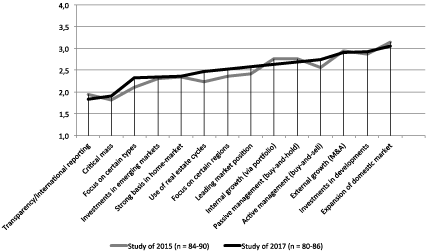
Figure 11: Characteristics of a “perfect” investment vehicle with 1 = very important to 4 = not important.
Countries and types for indirect investments
Swiss institutional investors are currently home-biased – shown in the study of 2017 and in the studies of 2016 and 2015 (Figure 12). This bias is expected to continue in the future: Most of the investors exhibited a preference for further activity in Switzerland and, in particular, an involvement in residential real estate. Foreign destinations of interest are Germany and the Nordic countries as well as the “big” real estate markets of the USA and Asia. Countries with current or recent economic difficulties, such as Spain or Italy, are of lesser interest for investments, as is the case for Countries in Eastern Europe (CEE) - which might be difficult for Swiss investors to evaluate.
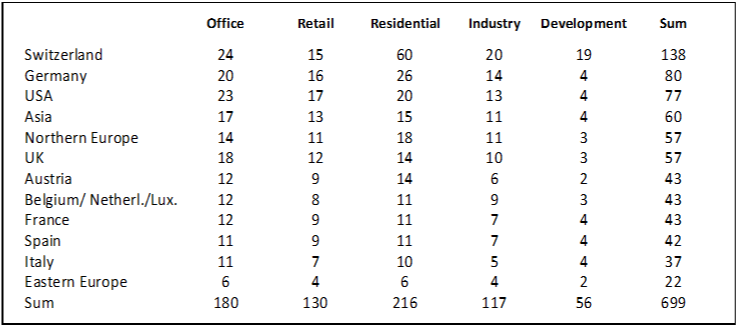
Figure 12: Future investment countries and types of real estate of institutional investors in 2017.
Future Returns of different types of real estate
The expected return is an important decision-making criterion and was asked in the surveys. First of all, it may be noted that with an increase in risk, the return on investment (total return) also increases, and that foreign investments demand higher returns than in Switzerland. The generally low yield requirements in Switzerland reflect the current situation with very low initial yields and a negative interest rate of the SNB. The high level of capital available coupled with a high level of investment pressure is also reflected in the yield requirements for (risky) peripheral office objects, which are assumed to have a yield of 4-5 % in Switzerland resp. 5-6 % abroad (Figure 13).
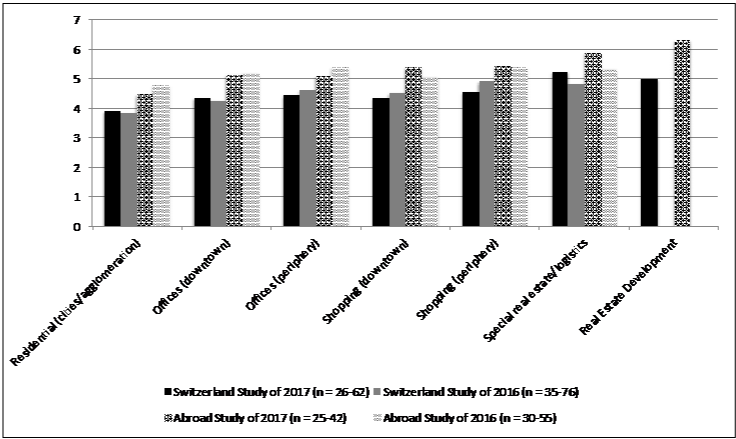
Figure 13: Overview of yield expectations by type of use.
Evaluation of the market for real estate vehicles
The institutions were asked to evaluate the current situation for indirect real estate products in their home countries and abroad. The situation in Switzerland is seen as more transparent, with adequate products, whereas abroad an information deficit can be assumed. Furthermore, funds seem to be more attractive than listed companies for real estate investments (Figure 14). All areas of digitalization are not seen as important factors for real estate investments. In Switzerland, product initiators may be required to demonstrate the advantages of investments abroad, and convince investors of the transparency of the foreign markets, and/or strive to enhance the actual transparency in these markets.
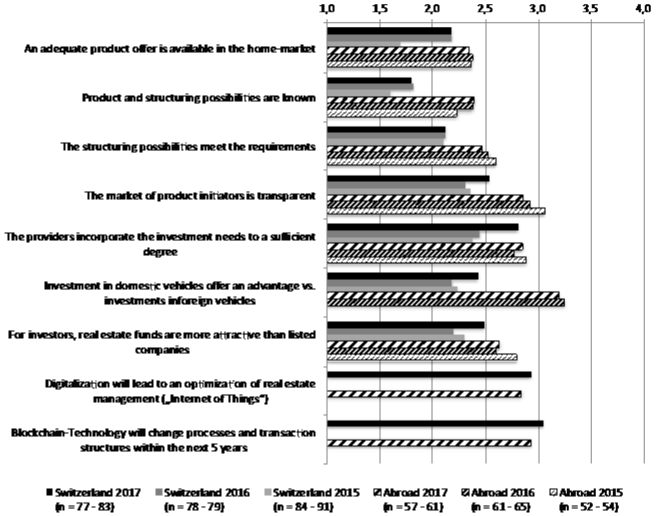
Figure 14: Evaluation of indirect real estate offers in home-markets and abroad with 1 = high acceptance to 4 = no acceptance.
Summary and Outlook
Based on an empirical survey among institutional investors in Switzerland in 2017, the paper analyzes current and future investment strategies in direct real estate and indirect real estate vehicles. Furthermore the results were compared with similar studies conducted in 2016 and 2015.
In the area of direct real estate investments, it can be observed, that during the year’s returns is decreasing and is in a bracket of 4-5 % in 2017. As the standard deviation is decreasing, market opportunities and higher returns are rare. Furthermore, investors estimate a stagnation of the real estate markets in the future. Investors are organized in different ways and use internal and external structures for a real estate asset management. In the analyzed periods, a tendency towards an externalization of real estate asset management services can clearly be observed. Related to the organizational structure, institutions can be classified in three different clusters based on the preference for an internalization and externalization of tasks in strategy, transaction, management and reporting. The choices for external asset management services are mainly based on reputation and track record.
Although the current real estate portfolios are already invested in Switzerland for more than 90%, further new investments will mainly be undertaken in Switzerland, especially in Swiss residential real estate, contradicting the portfolio theory. Professional software, simulation and management solutions are not seen as a necessary item for the management of the portfolio.
In the area of indirect real estate, investment returns in Switzerland and abroad are decreasing and stagnating and are currently evaluated at 4% accordingly. Future returns are estimated to be at 4-5 % for all types of real estate in Switzerland, respectively 5-6 % abroad, showing the current yield compressions. Investments in indirect vehicles are clearly driven by the diversification aspect and not by returns. Investments in investment-foundations are the preferred vehicle for indirect investments in Switzerland, followed by listed companies. Abroad, several vehicles are used for investments also dominated by investment foundations. Hereby, the “ideal” investment vehicle is a cost-efficient structure, showing a critical mass with a clear focus. The choice of external managers is mainly based on the reputation/track record and the cost structure of external companies.
Also with indirect investments, Swiss investors are marked by a strong “home-bias”, even in the future with a strong preference in residential real estate. Finally, Swiss investors consider their home country for real estate investment opportunities to be more attractive than those abroad, which also explains the sub-optimal investment allocation. In addition, some institutions invested abroad in 2007 and were confronted with market disruptions afterwards, whereas the Swiss markets have been increasing constantly.
Conclusion
Concluding, a suitable strategy for an internationalization of the portfolio, and an optimal asset allocation thereof, may be challenges for the future. Swiss investors are marked by increasing investment volumes in real estate, but are still highly home-biased when taking investment decisions, resulting in a suboptimal portfolio allocation. Tendencies to convert direct investments into indirect real estate vehicles cannot be confirmed for all institutional investors in general. Nevertheless, the study illustrates some selected approaches concerning how future investments in indirect real estate investments will be undertaken and optimized by investors in Switzerland. Further research is necessary in order to identify possible changes in the behavior of these investors in the future [9].
Acknowledgement
The author would like to thank the ASIP (Association of Pension Funds in Switzerland) for its support during the study, and the numerous critical discussions and remarks offered.
Furthermore, a sincere “thank you” is extended to all the institutional investors who answered the questionnaires in such a detailed manner, and for all the friendly discussions with colleagues, supporters and friends.
References
- (a). Bfs/Swiss Statistics: Datapool, Neuchâtel. 2017. (b). Creditsuisse. Swiss pension fund index: 1st quarter 2017.
- (a). Creditsuisse. Swiss pension funds. 2016. (b). Swisscanto. Swiss pension funds. 2016. (c). Complementa. On the current situation of Swiss pension funds, St. Gallen. 2016.
- (a). Truebestein. Real Estate Investment and Asset Management in Switzerland: Study Results. 2017. (b). Truebestein. Real Estate Asset Management in der Schweiz, Lucerne. 2016. (c). Truebestein. Study results on direct and indirect real estate investments in Switzerland, Germany and Austria, Springer-Publishers, Wiesbaden. 2015.
- Truebestein, Doehnert. Selection of a real estate manager: the experience - the only thing that counts? Swiss personnel security. 2015; 2: 93-94. (a). Truebestein. Study results on direct and indirect real estate investments in Switzerland, Germany and Austria. Springer Publishers. 2015. (b). Truebestein. Real Estate Asset and Investment Management for Institutional Investors in Switzerland. Journal of Real Estate Finance. 2015; 32: 108- 128. (c). Truebestein. Real Estate Investment and Asset Management of institutional investors in Switzerland, Germany and Austria - a theoretical and empirical comparison. Journal of Real Estate Research and Practice. 2015; 29: 9-19.
- (a). Atteslander P. Methods of Empirical Social Research, 10th new edition, Berlin / New York. 2003. (b). Scholl A. Survey: Social science methodology and communication science application. Konstanz. 2003.
- (a). Truebestein. Real Estate Investment and Asset Management in Switzerland: Study Results. 2017. (b). Truebestein (2016): Real Estate Asset Management in der Schweiz, Lucerne 2016.
- (a). Schnell R/ Hill, P. B/ Esser E. Methods of Empirical Social Research, 7th new edition, Munich /Wien. 2005. (b). Kromrey H. Empirical Social Research: Models and Methods of Standardized Data Collection and Data Analysis, 10th new edition. 2002.
- Bortz J/ Döring N. Research Methods and Evaluation for Human and Social Scientists, 4th, new edition. 2006.
- Trübestein Michael, Schenk Claudia. Property management in pension funds: What are the value generators? Swiss personnel security. 2017; 2: 101-103.